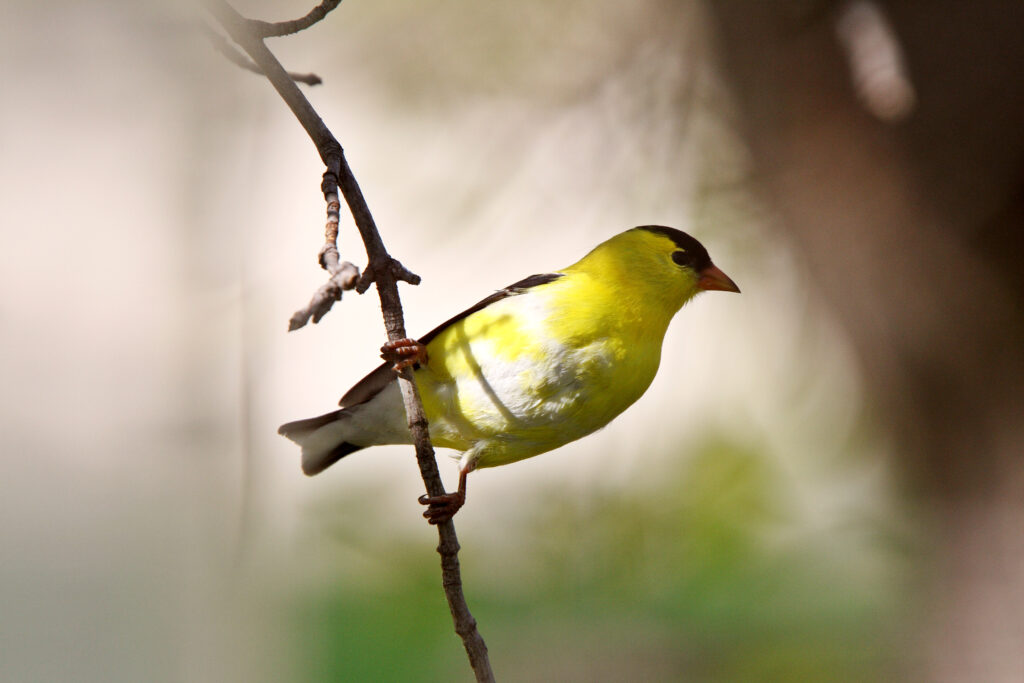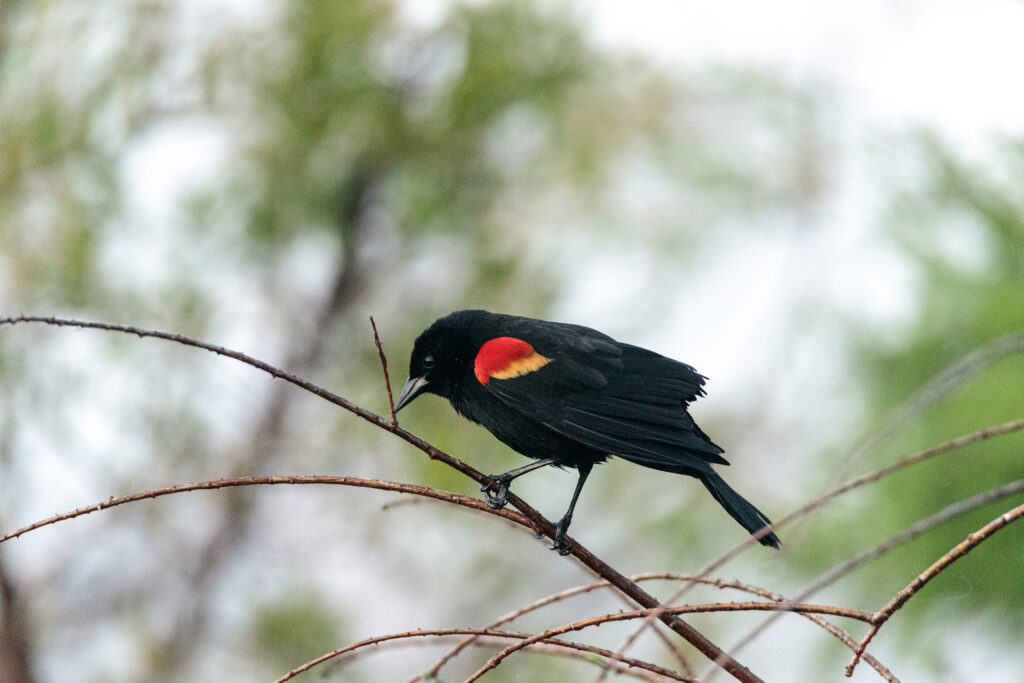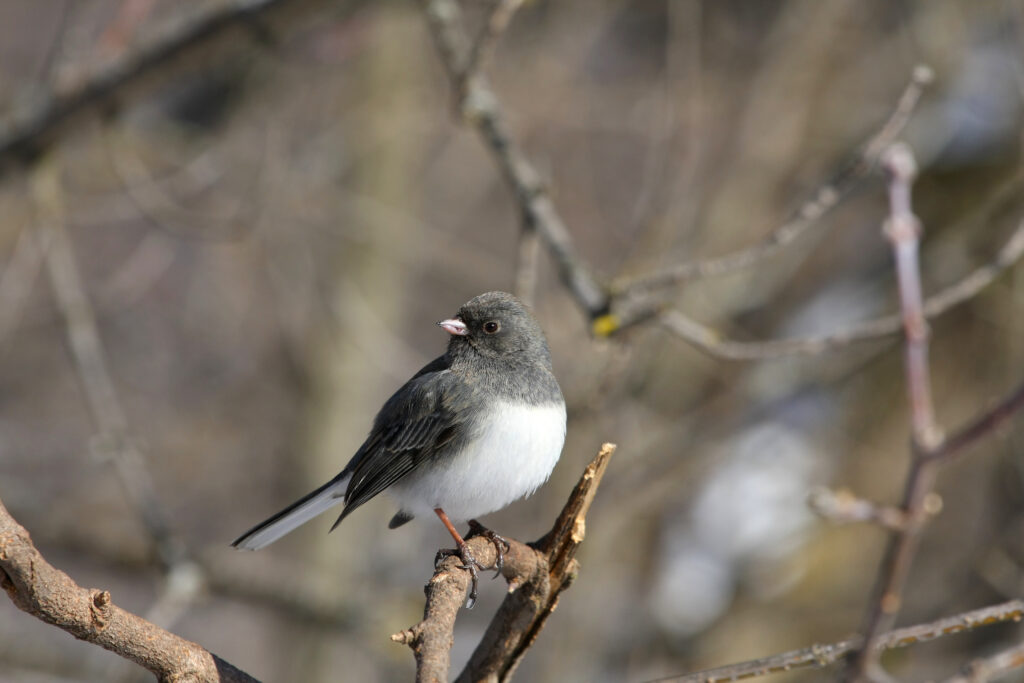Have you ever sat outside on a crisp autumn morning, sipping coffee and listening to the melodic songs of birds?
From the cheerful chirps of the Yellow-Rumped Warbler to the sweet trills of the Red-Eyed Vireo, backyard birds are a staple of the North American landscape.
Whether you’re a seasoned birder or simply enjoy the beauty of nature, there’s no denying the joy that these feathered friends bring to our lives.
So, come with us on a journey to discover the six most common backyard birds of North America and learn about their unique personalities, behaviors, and habitats.
| Image | Bird | Features | Price |
|---|---|---|---|
 |
| 9.7 | Check Price |
 |
| 9.5 | Check Price |
 |
| 9.1 | Check Price |
 |
| 8.8 | Check Price |
 |
| 8.6 | Check Price |
 |
| 8.2 | Check Price |
If you don’t have the time to read the whole article, check out this video for a quick understanding.
Most Common Backyard Birds of North America
1. Yellow-Rumped Warbler

The Yellow Rumped Warbler (Setophaga Coronata) is a small, migratory bird found in North America.
It got its name from the fact that they have a striking shade of yellow on its face, and sides and have a bright yellow rump.
The Yellow-rumped Warbler has a distinctive yellow patch on its rump, as well as a yellow throat and forehead.
The male has a gray head, neck, and back, with a white belly and wings that are dotted with black.
The female is similar in appearance but with a duller coloration.
Yellow-rumped Warblers are about 5-5.5 inches (13-14 cm) in length.
They typically weigh between 0.35-0.5 ounces (10-14 g).
The wingspan of a Yellow-rumped Warbler is about 7-8 inches (18-20 cm).
These beautiful migratory songbirds have a stable population and are more abundant than any other species of warblers.
These small birds are interesting and fun to watch but are difficult to observe as they whiz and flash in the open woods.
These birds leave their breeding habitats during the fall and return in Spring.
There are also two subspecies of this bird’s yellow-rumped warbler, the Myrtle subspecies, and the Audubon subspecies.
One of these has wings with a more yellow color and a throat with white color. This species is called the Myrtle subspecies.
They inhabit the eastern parts of the US and are common migrants during the winter in Washington.
Some breeds of the Myrtle type are also found in Alaska.
The Audobons have a yellow throat but have less white in their wings as compared to the Myrtle type.
Yellow-rumped warblers are highly adaptable and are more versatile than other warblers.
Their diet depends upon their habitat, mainly on seasons.
Yellow-rumped Warblers feed on insects, spiders, and berries.
They are known for their ability to feed on the wax-coated berries of bayberry and wax myrtle, which many other birds cannot digest.
They have a high population of over one hundred and thirty million.
Below are the characteristics of the Yellow-Rumped Warbler,
| Scientific Name | Setophaga coronata |
| Family Name | Parulidae |
| Length | 4.5-5.5 inches (11-14 cm) |
| Weight | 0.4-0.5 ounces (11-14 g) |
| Wingspan | 7-8 inches (18-20 cm) |
| Habitat | Coniferous forests, deciduous forests, scrublands, and suburban parks and gardens |
| Food | Insects, spiders, and fruit |
2. American Goldfinch

These small migrating birds that can be found across much of North America are known as the American Goldfinch (Spinus tristis).
These birds are known by some other common words, for example, the eastern goldfinch or the willow goldfinch.
The American Goldfinch is easily recognizable by its bright yellow feathers and distinctive, conical beak.
The male is bright yellow with a black forehead, wings, and tail, while the female is a duller olive-yellow color.
During the winter, both males and females develop brownish plumage.
American Goldfinches are about 4.3-5 inches (11-13 cm) in length.
They typically weigh between 0.35-0.5 ounces (10-14 g).
The wingspan of an American Goldfinch is about 7-8 inches (18-20 cm).
All year round, these birds range from the Atlantic to the Pacific.
In winter, they are found in Canada, while in summer, they can be a common sight in Mexico.
They are very common backyard birds but are hard to be recognized.
American Goldfinches feed mainly on seeds and insects.
They are especially fond of thistle seeds and often feed on the ground or in low-growing vegetation.
Below are the characteristics of the American Goldfinch,
| Scientific Name | Spinus tristis |
| Family Name | Fringillidae |
| Length | 4.7-5.5 inches (12-14 cm) |
| Weight | 0.4-0.6 ounces (12-17 g) |
| Wingspan | 7.5-8.7 inches (19-22 cm) |
| Habitat | Open fields, meadows, and gardens, as well as near agricultural land and suburban areas |
| Food | Seeds, buds, flowers, and insects |
3. Red-Winged Blackbird

The Red-winged blackbird (Agelaius phoeniceusis) is a very common and decent bird inhabiting the American forests.
The Red-winged Blackbird is easily recognizable by the bright red and yellow patches on the shoulders of the male.
The male also has a glossy black head, back, and wings.
The female is brown with streaked underparts and has a pale eyebrow.
Red-winged Blackbirds are about 7-9 inches (18-23 cm) in length.
They typically weigh between 1.0-1.4 ounces (28-40 g).
The wingspan of a Red-winged Blackbird is about 12-14 inches (30-36 cm).
These little songbirds are considered to be very abundant, with 80 million to 130 million of the population.
Their voices can be heard throughout the warm season in the forests.
This is evident by the fact that these birds continue to sing their short melodies even in warm seasons when other birds stop delivering their voices to the environment.
So they can be called Persistent and active singers of the woods.
These are often found flying very slowly among the top of foliage trees.
But they are very hard to see as the foliage trees are very dense and concentrated.
These beautiful forest singers seem to be increasing in their kind among other forest birds.
Red-winged Blackbirds feed mainly on insects, seeds, and grains.
Below are the characteristics of the Red-Winged Blackbird,
| Scientific Name | Agelaius phoeniceus |
| Family Name | Icteridae |
| Length | 8.7-9.8 inches (22-25 cm) |
| Weight | 1.0-1.4 ounces (29-40 g) |
| Wingspan | 12.6-14.2 inches (32-36 cm) |
| Habitat | Marshes, swamps, and wetlands, as well as near agricultural land and suburban areas |
| Food | Seeds, grains, insects, and spiders |
4. Dark-Eyed Junco

In the Northern parts of the United States, along with Alaska and the woody regions of Canada, you will see Dark-Eyed Junco (Junco hyemalis) flying around in the warm season.
The Dark-eyed Junco is easily recognizable by its distinctive, slate-gray head and back, and white belly.
They have a round body shape and a short, conical bill.
There are several different subspecies of Dark-eyed Juncos, each with slightly different markings, but all have dark eyes that give the bird its name.
Dark-eyed Juncos are about 5.5-6.5 inches (14-17 cm) in length. They typically weigh between 0.7-1.0 ounces (20-28 g).
The wingspan of a Dark-eyed Junco is about 7-8 inches (18-20 cm).
Mountains and woody areas in the north are inhabited by these so that they could nest there.
They are mostly found in the northern regions where their population is between one hundred and fifty million to two hundred million in number.
These birds are also known as snowbirds because of their appearance around feeders in the cold season of winter.
In the winter season, you will find various races, but in the warm season, you will only find five races residing in various locations.
These warm-season five races have now been grouped into one species as a whole.
They belong to the genus of small grayish American sparrows and a species of Juncos.
Dark-Eyed Juncos feed on seeds, insects, and fruit.
Below are the characteristics of the Dark-Eyed Junco,
| Scientific Name | Junco hyemalis |
| Family Name | Emberizidae |
| Length | 6.0 inches (15 cm) |
| Weight | 0.7 ounces (20 g) |
| Wingspan | 9.5 inches (24 cm) |
| Habitat | Coniferous forests, deciduous forests, scrublands, agricultural lands, urban parks, and gardens |
| Food | Seeds, insects, and fruit |
5. Red-Eyed Vireo

There are between eighty million to one hundred and thirty million population of Red-eyed Vireo (Vireo olivaceus).
The Red-Eyed Vireo is a small bird with a round head, a short, conical bill, and a medium-length tail.
It has a green back, wings, and tail, with a white underbelly and a gray-brown head.
The most distinctive feature of the Red-Eyed Vireo is its red eyes.
The Red-Eyed Vireo is approximately 5 inches (13 cm) in length. They typically weigh around 0.7 ounces (20 g).
The wingspan of a Red-Eyed Vireo is around 7.5 inches (19 cm).
They are usually quiet during the warmer months, and during other times of the year, they sing beautiful and melodious songs that capture the hearts of the listener.
They never get tired of singing these songs.
These birds are so abundant that you will be able to listen to them almost around anywhere in North America.
It is hard to get a sight of them as they usually hide in the treetops, which have dense leaves and foliage.
Because they are hard to see, it is hard to believe and is a shocking fact for most bird watchers.
The Red-eyed Vireo is a small American songbird with a long, angular head, thick neck, and a strong small bill.
The Red-Eyed Vireo feeds on insects, spiders, and fruit.
Below are the characteristics of the Red-Eyed Vireo,
| Scientific Name | Vireo olivaceus |
| Family Name | Vireonidae |
| Length | 5.0 inches (13 cm) |
| Weight | 0.7 ounces (20 g) |
| Wingspan | 7.5 inches (19 cm) |
| Habitat | Deciduous and mixed forests, woodland clearings, streams, suburban parks, and gardens |
| Food | Insects, spiders, and fruit |
6. Swainson’s Thrush

These Swainson’s thrush (Catharus ustulatus) are the residents of the Western mountains and the Northeastern states.
Swainson’s Thrush is a medium-sized bird with a round head, a medium-length tail, and a slightly down-curved bill.
It has a brownish-olive back, with a spotted white underbelly, and a rust-colored tail.
Swainson’s Thrush is approximately 7 inches (18 cm) in length. They typically weigh around 1.2 ounces (35 g).
The wingspan of a Swainson’s Thrush is around 11 inches (28 cm).
The head is a darker brown with a faint eye ring.
They are also found in Alaska and Canadian forests in the breeding seasons.
Their population is about a hundred million, so Swainson’s thrush is one of the most common birds in North America.
Their breeding habitat is coniferous woods with dense undergrowth across Canada, Alaska, and the northern United States; also, deciduous wooded areas on the Pacific coast of North America.
They migrate to southern Mexico and as far south as Argentina.
These birds are not very friendly and like to stay alone.
They would be found in the darker regions singing high notes in soft, soothing voices.
Their voices could be heard in the fall, and spring seasons, that is, when the skies are clear with shimmering stars.
Swainson’s Thrushes feed on insects, spiders, snails, and fruit.
Below are the characteristics of the Swainson’s Thrush,
| Scientific Name | Catharus ustulatus |
| Family Name | Turdidae |
| Length | 7.0 inches (18 cm) |
| Weight | 1.2 ounces (35 g) |
| Wingspan | 11.0 inches (28 cm) |
| Habitat | Deciduous and coniferous forests, shrublands, wetlands, suburban parks, and gardens |
| Food | Insects, spiders, snails, and fruit |
Conclusion
In conclusion, backyard birds are a beloved part of the North American landscape, and the six species we’ve discussed here are just a few of the many wonderful birds that we can enjoy in our own yards.
From the American Goldfinch to the Swainson’s Thrush, each species has its own unique personality and charm, and they all play an important role in the ecosystem.
Again, These are the Most Common Birds in North America:
- Yellow-Rumped Warbler
- American Goldfinch
- Red-Winged Blackbird
- Dark-Eyed Junco
- Red-Eyed Vireo
- Swainson’s Thrush
Whether you’re a seasoned birder or just starting to appreciate these feathered friends, there’s no better time than now to start exploring the world of backyard birds.
So, grab your binoculars, sit back, and enjoy the music of nature.
FAQ
When is the best time to see backyard birds?
The best time to see backyard birds is during the spring and summer months when birds are nesting and raising their young. However, you can also see a variety of birds year-round if you provide food and shelter.
How can I attract backyard birds to my yard?
You can attract backyard birds to your yard by providing food, water, and shelter. Offer bird feeders filled with seeds, suet, or nectar, a birdbath for drinking and bathing, and birdhouses or nest boxes for nesting.
What type of food is best for backyard birds?
Different species of birds prefer different types of food, but some of the most popular options include sunflower seeds, suet, and nectar. You can also offer fruits, nuts, and mealworms.
Do backyard birds migrate?
Yes, many species of backyard birds migrate to warmer climates in the winter, and then return in the spring.
How can I identify different species of backyard birds?
You can identify different species of backyard birds by their size, color, markings, and songs. It’s helpful to have a bird identification guide and a pair of binoculars when bird-watching.
What is the role of backyard birds in the ecosystem?
Backyard birds play an important role in the ecosystem by pollinating plants, controlling insect populations, and distributing seeds. They also provide important food sources for other animals, such as snakes, squirrels, and larger birds of prey.
Last Updated on March 22, 2023 by Lily Aldrin
